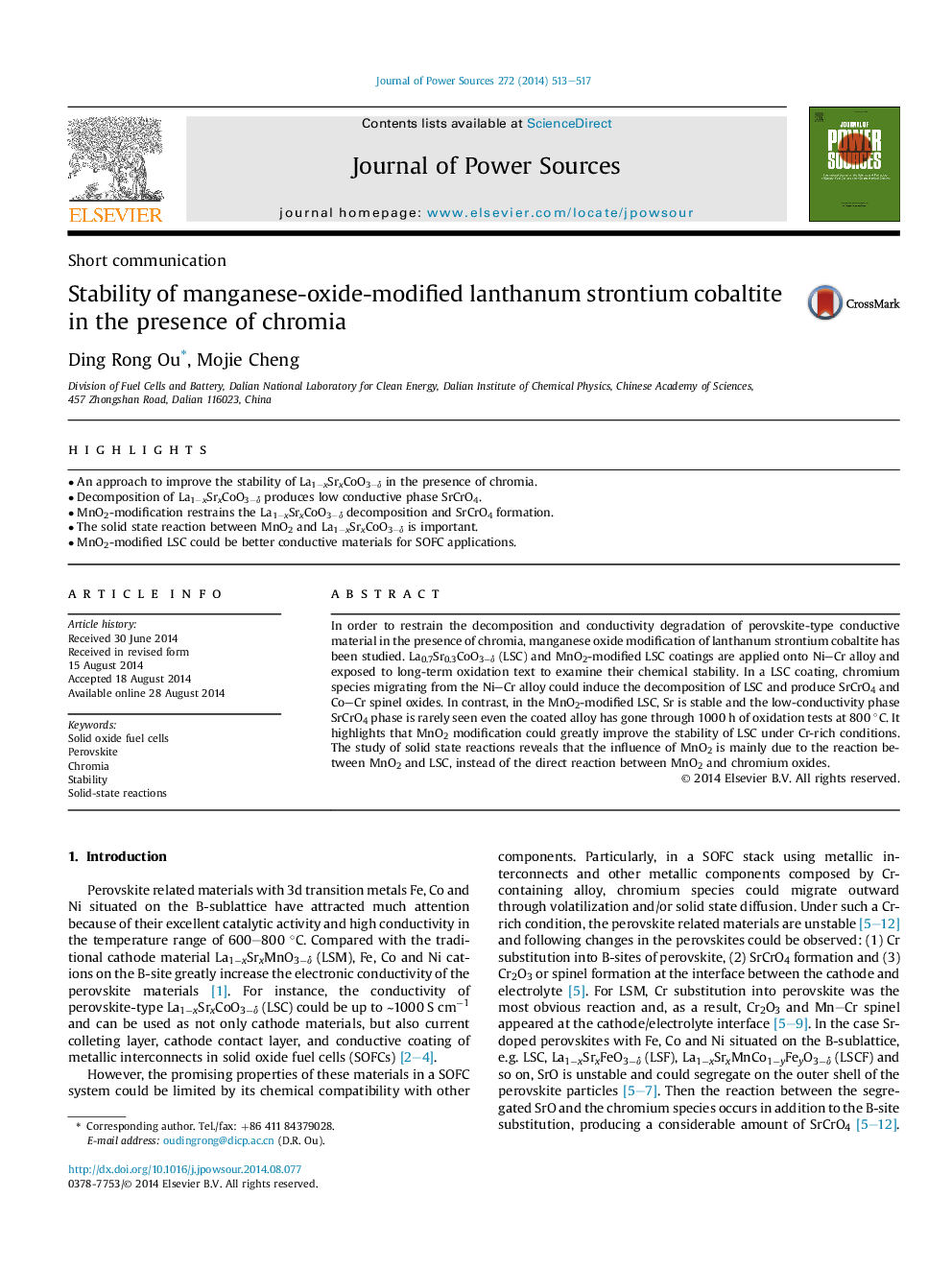| Article ID | Journal | Published Year | Pages | File Type |
|---|---|---|---|---|
| 1283944 | Journal of Power Sources | 2014 | 5 Pages |
•An approach to improve the stability of La1−xSrxCoO3−δ in the presence of chromia.•Decomposition of La1−xSrxCoO3−δ produces low conductive phase SrCrO4.•MnO2-modification restrains the La1−xSrxCoO3−δ decomposition and SrCrO4 formation.•The solid state reaction between MnO2 and La1−xSrxCoO3−δ is important.•MnO2-modified LSC could be better conductive materials for SOFC applications.
In order to restrain the decomposition and conductivity degradation of perovskite-type conductive material in the presence of chromia, manganese oxide modification of lanthanum strontium cobaltite has been studied. La0.7Sr0.3CoO3−δ (LSC) and MnO2-modified LSC coatings are applied onto Ni–Cr alloy and exposed to long-term oxidation text to examine their chemical stability. In a LSC coating, chromium species migrating from the Ni–Cr alloy could induce the decomposition of LSC and produce SrCrO4 and Co–Cr spinel oxides. In contrast, in the MnO2-modified LSC, Sr is stable and the low-conductivity phase SrCrO4 phase is rarely seen even the coated alloy has gone through 1000 h of oxidation tests at 800 °C. It highlights that MnO2 modification could greatly improve the stability of LSC under Cr-rich conditions. The study of solid state reactions reveals that the influence of MnO2 is mainly due to the reaction between MnO2 and LSC, instead of the direct reaction between MnO2 and chromium oxides.
